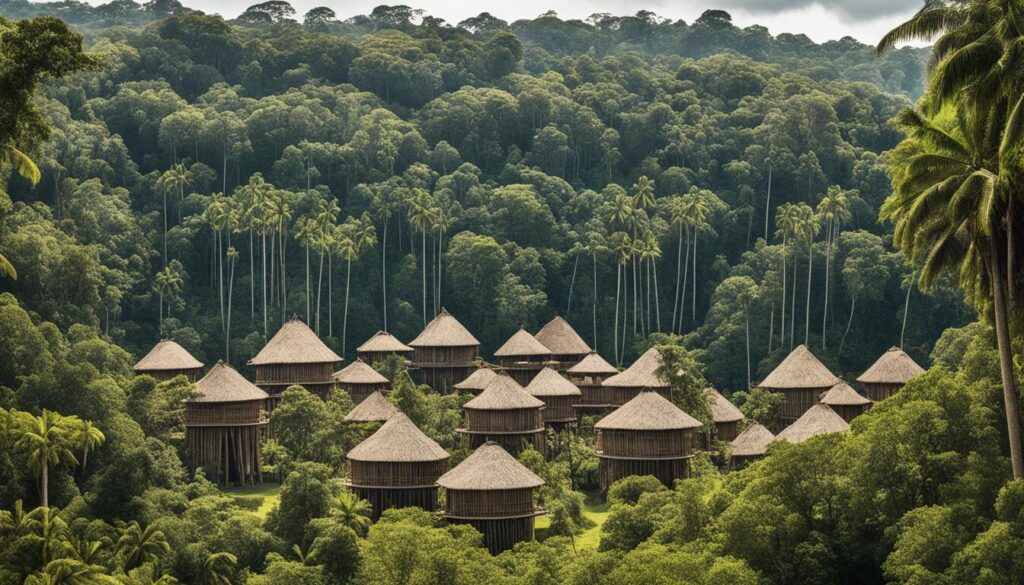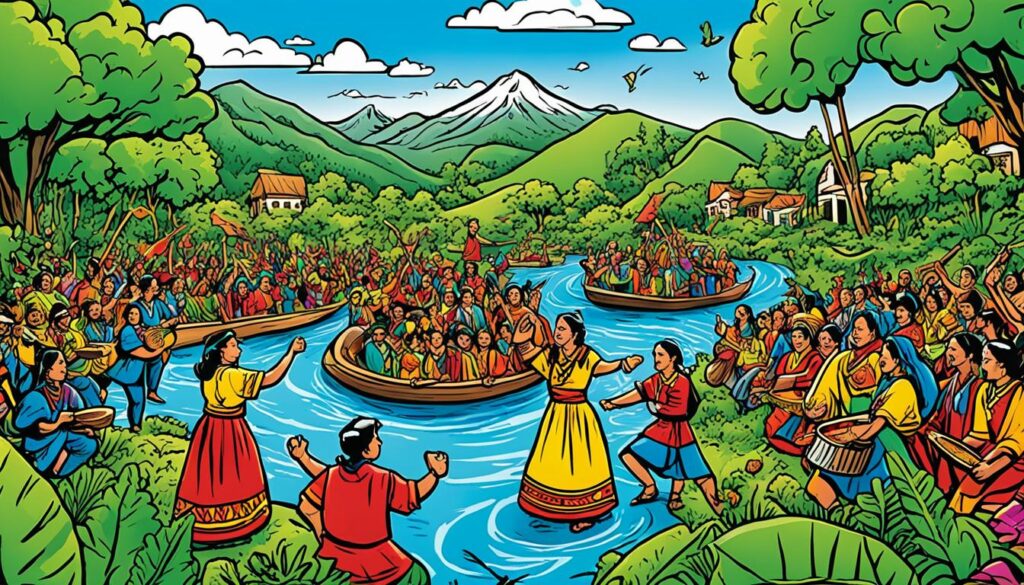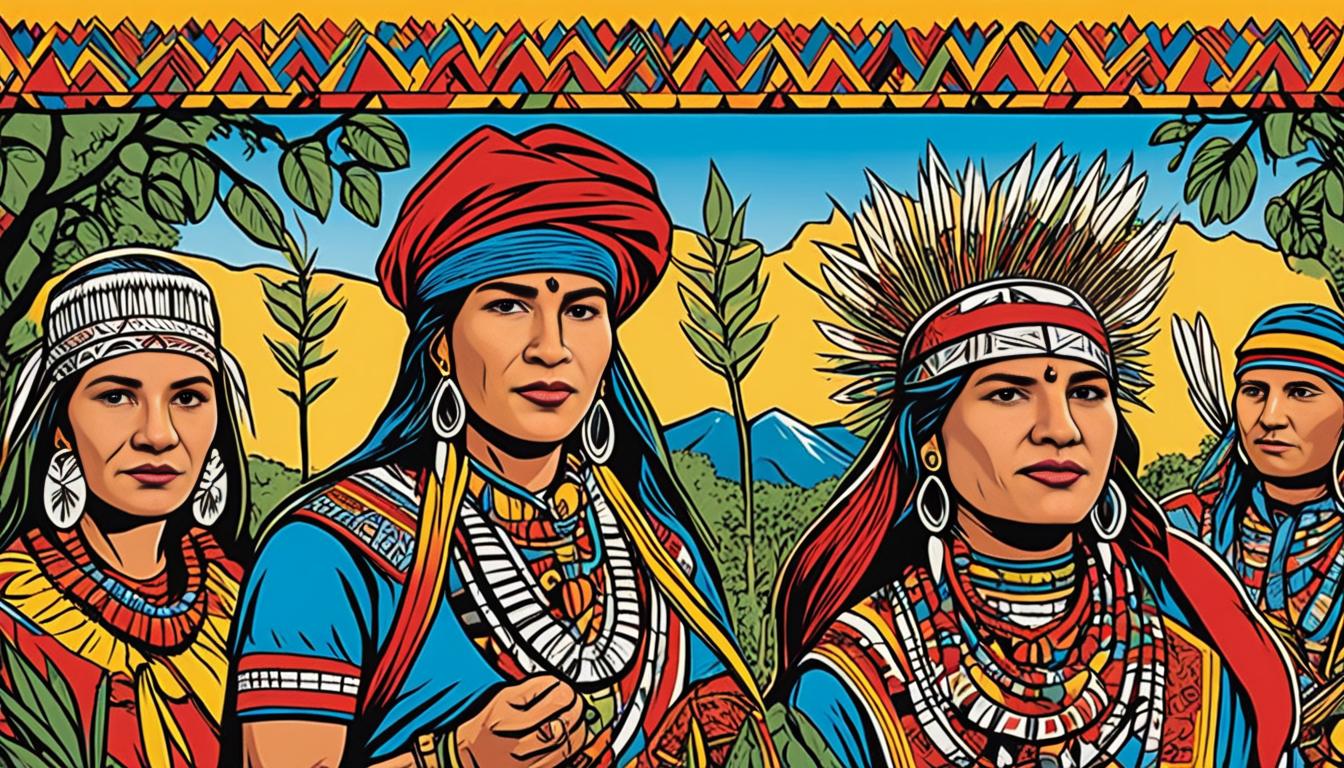Did you know that there are over 200 indigenous languages spoken in Brazil? Among them is the Baniwa Language, a fascinating and rich linguistic heritage that is at risk of disappearing. As the world grapples with the loss of linguistic diversity, the preservation of indigenous languages like Baniwa becomes crucial. In this article, we will delve into the Baniwa Language, its significance, and the efforts being made to preserve it for future generations.
Indigenous languages are an integral part of a country’s cultural tapestry and reflect the unique knowledge and worldview of their speakers. However, these languages face numerous challenges, including cultural assimilation, globalization, and language shift. The Baniwa Language, spoken by the Baniwa people who reside on the borders of Brazil with Colombia and Venezuela, is no exception.
Stay tuned as we explore the names and languages of the Baniwa, their history of occupation, the location and population of their communities, and the ongoing efforts to preserve their language and culture. Join us in celebrating the linguistic diversity of Brazil and the importance of language preservation for a more inclusive and culturally rich society.
Names and languages of the Baniwa
The Baniwa people, living along the Içana River and its tributaries, are associated with the Arawakan languages. However, the term “Baniwa” is not a self-designation but a generic name used in multiethnic contexts. Within their community, they are known by different collective self-designations such as Hohodene, Walipere-dakenai, or Dzauinai.
The Baniwa language is closely related to the Kuripako language, spoken by the Kuripako people who reside in Colombia and the upper Içana. The Kuripako share many cultural and linguistic characteristics with the Baniwa, as they speak a dialect of the Baniwa language.
“The Baniwa and Kuripako have a strong connection through language and shared heritage. Our languages are a vital part of our identity and cultural preservation.” – Baniwa elder
The Baniwa and Kuripako languages are both part of the Arawakan language family, which extends beyond their specific communities to encompass other indigenous groups along the Içana River and its tributaries.
Arawakan Languages Spoken Along the Içana River
| Language | Associated Indigenous Group |
|---|---|
| Baniwa | Baniwa, Kuripako |
| Tariana | Tariano |
| Baré | Baré |
| Piratapuya | Piratapuya |
| Koarary | Koarary |
The Baniwa and Kuripako languages are crucial links to the linguistic diversity and cultural heritage of the Arawakan-speaking communities in the region.
Baniwa traditional basketry showcases the artistic skills of the Baniwa people, reflecting their cultural heritage and craftsmanship.
History of occupation
The Baniwa people have a rich history of occupation in the region, with their ancestors settling away from the main rivers and establishing homes in the headwaters of feeder streams. Evidence of ancient malocas (longhouses) can still be found today, although these structures are now uninhabited.
The influence of missionaries and colonization played a significant role in shaping the Baniwa’s settlement patterns. Over time, the Baniwa gradually moved closer to the rivers, particularly the Içana, as colonization spread throughout the region.
As the Baniwa population grew, they expanded their settlements along the Içana and its tributaries. This expansion was driven by the need for resources and the interactions with surrounding communities. Throughout their history, the Baniwa have had contact with various outside groups, including being taken as slaves during the period of slavery, which further shaped their cultural and social landscape.
The Baniwa people’s history of occupation showcases their adaptability and resilience in the face of outside influences and challenges.
To gain a more comprehensive understanding of their history, let’s take a look at some key events and periods that have shaped the Baniwa community:
| Period | Key Events |
|---|---|
| Pre-colonization | Settlement away from main rivers Ancient malocas (longhouses) constructed |
| Colonization | Influence of missionaries Movement towards rivers and urban centers |
| Expansion | Population growth Settlements along Içana and its tributaries |
| Slavery Era | Baniwa taken as slaves during period of slavery |
This table highlights key periods in the Baniwa’s history, shedding light on their gradual adaptation to changing circumstances and their interactions with external forces.

Ancient malocas, or longhouses, provide a glimpse into the historic architecture of the Baniwa people.
Location and population
The Baniwa communities in Brazil are scattered across various settlements along the Içana River and its tributaries. These settlements include the mid- and lower Içana, Cubate, Cuiari, and Aiari rivers. In addition to these riverine communities, the Baniwa people also inhabit settlements along the upper Rio Negro and in the cities of São Gabriel, Santa Isabel, and Barcelos.
The Kuripako, who speak a dialect of the Baniwa language, are predominantly found in the upper Içana region. They share many cultural and linguistic characteristics with the Baniwa.
It is estimated that the Baniwa population in Brazil is around 4,026 individuals, including both adults and children.
Cities and Settlements
The Baniwa communities are not restricted to rural areas alone. They have established themselves in urban centers such as São Gabriel da Cachoeira, Santa Isabel, and Barcelos. These cities provide opportunities for education, healthcare, and economic activities, while the Baniwa continue to maintain their cultural identity and connection with their ancestral lands along the Içana River.
Image related to the Içana River and Brazilian settlements
Language and culture preservation
The preservation and revitalization of indigenous languages, such as the Baniwa language, are vital for maintaining linguistic diversity and preserving indigenous knowledge and heritage in South America. The Baniwa language, like many other indigenous languages, faces challenges in its preservation efforts, but various initiatives are underway to safeguard its future.
One significant aspect of language preservation is the documentation and study of the Baniwa language through linguistic research. By thoroughly understanding the language’s grammar, vocabulary, and linguistic structures, researchers can contribute to its preservation and promote its continued use and development.
Local communities and organizations are actively engaged in language preservation initiatives. Language education programs aim to teach the Baniwa language to younger generations, ensuring its transmission and continuity. These programs not only focus on language instruction but also incorporate cultural elements, strengthening the connection between language and heritage.
“Language education programs are crucial in revitalizing indigenous languages and reclaiming cultural identities. Through these initiatives, we can pass on our ancestral languages to future generations and ensure the preservation of our indigenous heritage.” – Baniwa community leader
Cultural festivals and events also play a significant role in the revitalization of the Baniwa language and culture. These gatherings provide opportunities for community members to practice and showcase their language skills while celebrating their rich cultural traditions. Festivals often include traditional performances, storytelling, and art exhibitions, creating a vibrant environment for language revitalization.

Importance of Indigenous Languages and Linguistic Diversity
Preserving the Baniwa language is not only valuable for the Baniwa people themselves but also for the broader context of linguistic diversity in South America. Indigenous languages contribute to the overall cultural tapestry of the region and represent unique systems of knowledge and wisdom.
Linguistic diversity is essential for promoting mutual understanding, fostering cross-cultural communication, and preserving the rich heritage of indigenous communities. Each language carries distinct cultural nuances, expressions, and ways of thinking, which contribute to the overall diversity of human language and culture.
By supporting language preservation initiatives and celebrating linguistic diversity, we can ensure the continued survival and flourishing of indigenous languages like the Baniwa language. It is a collective responsibility to value and respect the linguistic and cultural heritage of indigenous communities, contributing to a more inclusive and diverse society.
Conclusion
The Baniwa Language of Brazil is an integral part of the linguistic and cultural heritage of the region. However, like many indigenous languages, it is currently facing the threat of endangerment. The Baniwa people, recognizing the importance of their language, are actively engaged in efforts to preserve and revitalize it.
Linguistic research plays a crucial role in understanding the Baniwa language and its unique characteristics. Through the study of grammar, phonetics, and vocabulary, researchers can create comprehensive documentation that serves as a valuable resource for future generations.
Additionally, education programs and community initiatives are being implemented to promote the use of the Baniwa language within the younger generation. Language education programs provide opportunities for children to learn and practice their ancestral language, ensuring its continued transmission.
By recognizing and supporting these efforts, we contribute to the preservation of indigenous languages and the enrichment of linguistic diversity. The survival of indigenous languages is not only essential for the Baniwa people but also for the broader cultural heritage of Brazil. Together, we can ensure that the Baniwa Language thrives for generations to come.
FAQ
What is the Baniwa Language?
The Baniwa Language is spoken by the Baniwa people, who live on the borders of Brazil with Colombia and Venezuela. It is an indigenous language that belongs to the Arawakan language family.
Who are the Baniwa and Kuripako?
The Baniwa are a group of indigenous people living in villages along the Içana River and its tributaries in Brazil. The Kuripako, who share similar cultural and linguistic characteristics, live in Colombia and on the upper Içana.
What is the history of Baniwa occupation?
The Baniwa ancestors built their homes away from the main rivers, but due to the influence of missionaries and colonization, they gradually moved closer to the rivers. They have a long history of contact with outside groups.
Where are the Baniwa communities located?
The Baniwa communities are located in various settlements along the Içana River and its tributaries, as well as in communities along the upper Rio Negro/Guainía and in urban centers such as São Gabriel da Cachoeira, Santa Isabel, and Barcelos.
How many Baniwa people are there in Brazil?
The Baniwa population in Brazil is estimated to be around 4,026 individuals.
What efforts are being made to preserve the Baniwa language?
Efforts are being made to document and study the Baniwa language through linguistic research. Local communities and organizations are also working on language preservation initiatives, including language education programs and cultural festivals.
Why is the preservation of the Baniwa language important?
The Baniwa language and culture are important for maintaining linguistic diversity in South America and the overall preservation of indigenous knowledge and heritage. Supporting these efforts ensures the continued survival of indigenous languages and cultural traditions.
